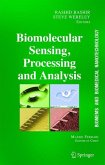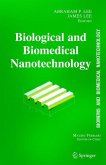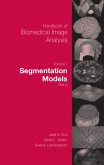The frontiers of microtechnology and nanotechnology are changing the face of medicine through the efforts of researchers to build biomedical microelectromechanical systems, or bioMEMS - tiny working machines so small, they measure only a few millionths of a meter across. BIOMEMS AND BIOMEDICAL NANOTECHNOLOGY, edited by Mauro Ferrari, comprises the first comprehensive reference devoted to all aspects of research in the diagnostic and therapeutic applications of Micro-Electro-Mechanical Systems (MEMS), microfabrication, and nanotechnology. Contributions report on fundamental and applied investigations of the material science, biochemistry, and physics of biomedical microdevices.
General subjects treated include the design, characterization, testing, modeling and clinical validation of microfabricated systems and their integration on-chip and in larger functional units. Intended to be accessible to professionals and researchers from both the center of this fast-developing technology and adjacent fields, BIOMEMS AND BIOMEDICAL NANOTECHNOLOGY delivers a valuable knowledge base of key research and applications articles from acknowledged experts on an international scope.
Each volume is very well illustrated with many figures appearing in color.
This major reference includes contributions from world renowned experts in the field and consists of four volumes:
Volume I: BIOMEDICAL AND BIOLOGICAL NANOTECHNOLOGY (Volume Editors, Abraham Lee and James Lee) - focuses on synthetic nanodevices and the synthesis of nanomaterials and the generation of nanoscale features. The nanomaterials include polymeric microspheres and nanostructures, carbon nanotubes, silicon, silicon dioxide, and iron oxide. There is also a chapter on the characterization of critical nanostructures for bio applications such as nanochannels and nanopores. The second part involves hybrid synthetic-biomolecular nanodevices that utilize the self assembly properties of both biomolecules and synthetic materials.
Volume II: MICRO/NANO TECHNOLOGY FOR GENOMICS AND PROTEOMICS (Volume Editors, Mihrimah Ozkan and Michael Heller) - reports on fundamental and applied investigations of the material science, biochemistry, and physics of biomedical microdevices with applications to Genomics and Proteomics. Topics include gene expression profiling utilizing microarray technology; imaging and sensing for gene detection and use in DNA analysis, and coverage of advanced microfluidic devices.
Volume III: THERAPEUTIC MICRO/NANOTECHNOLOGY (Volume Editors, Tejal Desai and Sangeeta Bhatia) - treats the emerging area of therapeutic micro- and nanotechnology. Subjects covered include: cell-based therapeutics, regenerative medicine - merging cells with micro- and nanosystems, and integrating MEMS with cells and tissues; Drug delivery - intravascular nanoparticles for drug targeting and nonvascular delivery (implantable, oral, inhalable); molecular surfaceengineering for the biological interface, biomolecule patterning and cell patterning.
Volume IV: BIOMOLECULAR SENSING, PROCESSING AND ANALYSIS (Volume Editors, Rashid Bashir and Steve Wereley) - is a balanced review of key aspects of BioMEMS sensors, including (i) BioMEMS sensors and materials, (ii) means of manipulating biological entities at the microscale, and (iii) micro-fluidics and characterization.
General subjects treated include the design, characterization, testing, modeling and clinical validation of microfabricated systems and their integration on-chip and in larger functional units. Intended to be accessible to professionals and researchers from both the center of this fast-developing technology and adjacent fields, BIOMEMS AND BIOMEDICAL NANOTECHNOLOGY delivers a valuable knowledge base of key research and applications articles from acknowledged experts on an international scope.
Each volume is very well illustrated with many figures appearing in color.
This major reference includes contributions from world renowned experts in the field and consists of four volumes:
Volume I: BIOMEDICAL AND BIOLOGICAL NANOTECHNOLOGY (Volume Editors, Abraham Lee and James Lee) - focuses on synthetic nanodevices and the synthesis of nanomaterials and the generation of nanoscale features. The nanomaterials include polymeric microspheres and nanostructures, carbon nanotubes, silicon, silicon dioxide, and iron oxide. There is also a chapter on the characterization of critical nanostructures for bio applications such as nanochannels and nanopores. The second part involves hybrid synthetic-biomolecular nanodevices that utilize the self assembly properties of both biomolecules and synthetic materials.
Volume II: MICRO/NANO TECHNOLOGY FOR GENOMICS AND PROTEOMICS (Volume Editors, Mihrimah Ozkan and Michael Heller) - reports on fundamental and applied investigations of the material science, biochemistry, and physics of biomedical microdevices with applications to Genomics and Proteomics. Topics include gene expression profiling utilizing microarray technology; imaging and sensing for gene detection and use in DNA analysis, and coverage of advanced microfluidic devices.
Volume III: THERAPEUTIC MICRO/NANOTECHNOLOGY (Volume Editors, Tejal Desai and Sangeeta Bhatia) - treats the emerging area of therapeutic micro- and nanotechnology. Subjects covered include: cell-based therapeutics, regenerative medicine - merging cells with micro- and nanosystems, and integrating MEMS with cells and tissues; Drug delivery - intravascular nanoparticles for drug targeting and nonvascular delivery (implantable, oral, inhalable); molecular surfaceengineering for the biological interface, biomolecule patterning and cell patterning.
Volume IV: BIOMOLECULAR SENSING, PROCESSING AND ANALYSIS (Volume Editors, Rashid Bashir and Steve Wereley) - is a balanced review of key aspects of BioMEMS sensors, including (i) BioMEMS sensors and materials, (ii) means of manipulating biological entities at the microscale, and (iii) micro-fluidics and characterization.








